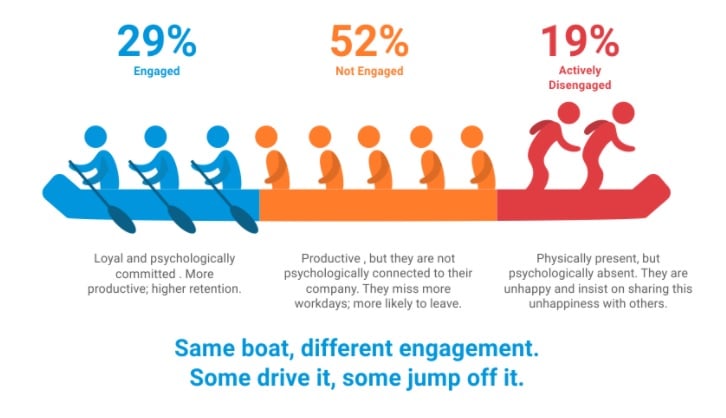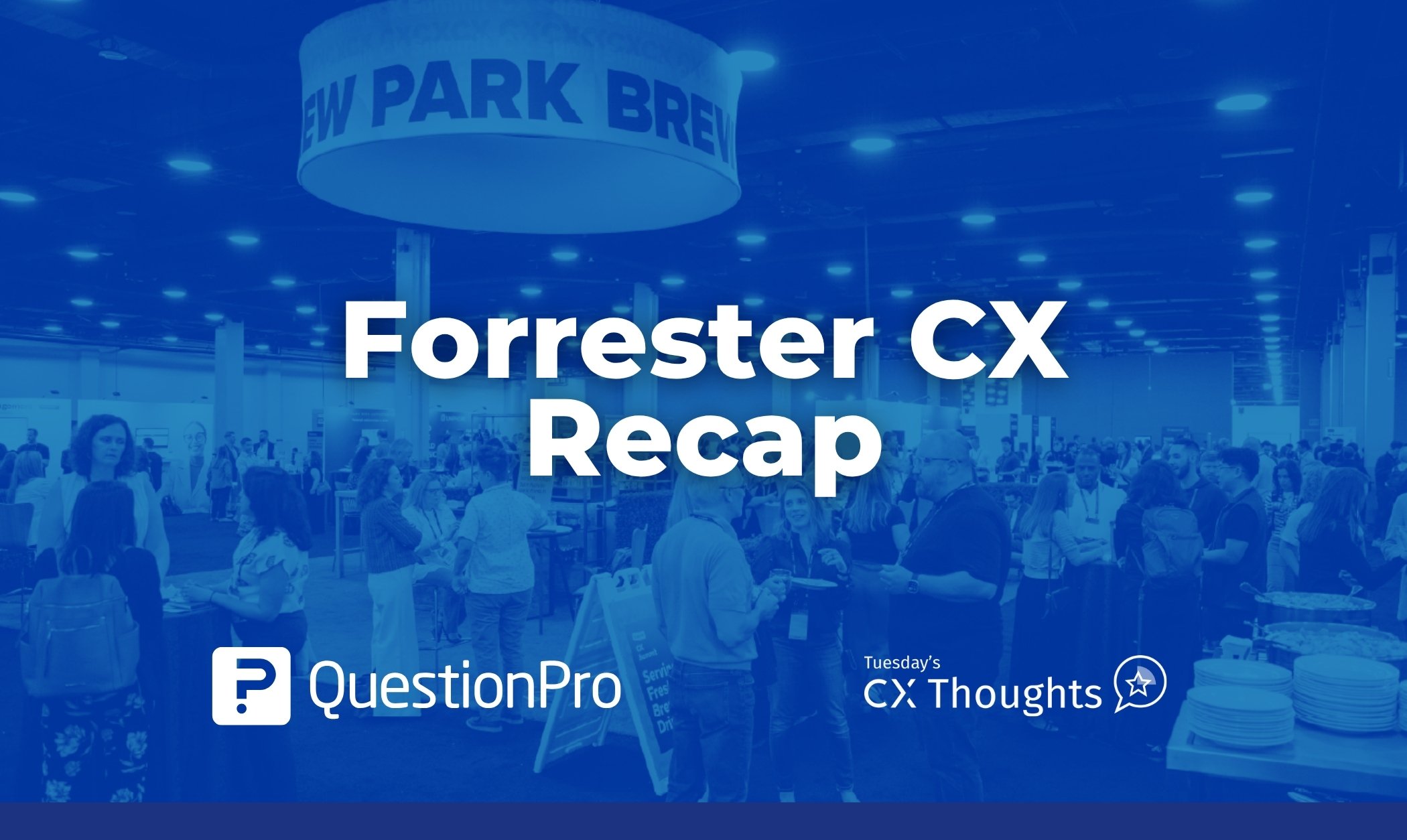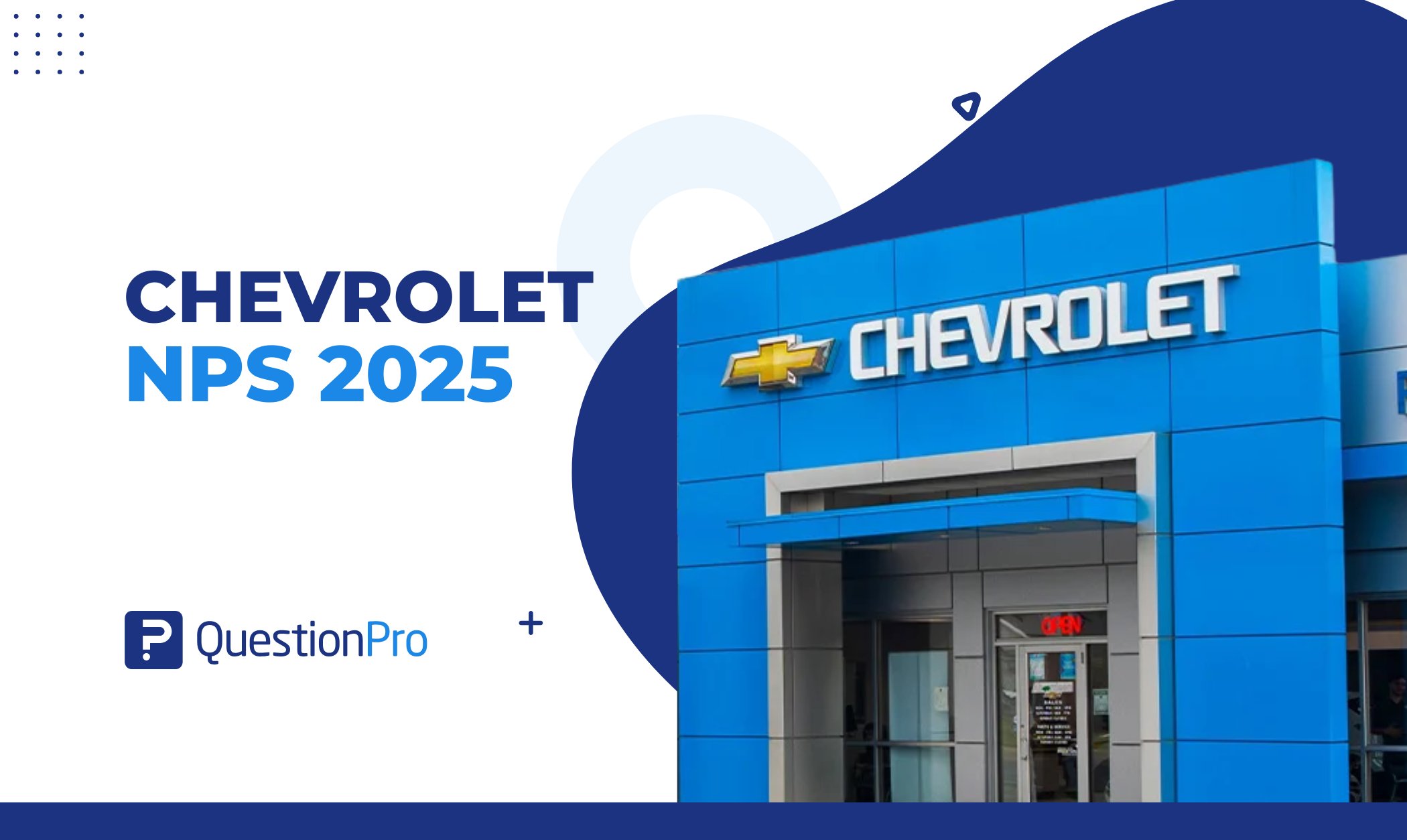
Learn Why Employee Engagement is Dead and How Getting Serious About Culture Unlocks New Performance
Culture is about what is deeply valued in the system, and—here’s the important part—making sure what is valued is connected to what drives success for the enterprise.
Defining Employee Engagement
Why this is a relevant problem
“Your employees are your greatest assets.” And yet, more often than not, employees feel like a cog in a system, punching in hours. Anecdotally, all of us know people who aren’t happy with their jobs. In fact, that’s probably the rule rather than the exception; Gallup, only 33% of all employees are actively engaged in their jobs.

Many of us are envious of the cool organizational cultures that companies like Google, Zappos, and Netflix have created, but we’re missing an important point. Culture is not about being cool or even about having happy employees. It is about reinforcing what drives the success of the enterprise and subsequently being able to adopt the culture (sometimes one process at a time) as markets and internal dynamics shift. Employee engagement is the strongest motivating factor for every working individual.
The happier your employees are at work, the better ambassadors they will be while discussing your workplace outside of your office. Measuring employee engagement is therefore very important.
This may be over-simplifying a bit, but I have noticed that when it comes to culture change, most people see themselves in one of two camps: the planners or the experimenters. The planners want to know where they’re headed before they start moving. They focus on goals, prioritization, sequence, and contingencies. Experimenters, on the other hand, might feel tied down by the employee engagement action plans. They want to try things and learn by doing and are happier to just “roll with it.”
As you might imagine, these two camps take decidedly different approaches to culture change. Which approach should you take? Honestly, it’s your choice. Neither approach has a monopoly on the most effective way to do organizational change. But you should be intentional about your choice of approach. Think about your existing culture and leadership, for instance. It’s quite possible that one approach would be more compatible than the other.
LEARN ABOUT: Work culture
I will tell you about both approaches, of course, but let’s be honest: The planners like to go first! So, we’ll start with the “assessment approach” to culture change. Learn more about improving employee engagement with great work culture surveys.
Learn more: employee engagement survey examples
Employee Engagement and Culture: Finding the Right Assessment
The first step is to assess your culture, and I’m not going to hide my bias: My partners and I developed an assessment, that is included in our Workplace Genome™ Platform, and we think it’s really powerful. That being said, we’re not so blind that we don’t realize that, in fact, there may be other assessments out there that work better for you at your particular point of cultural evolution. Culture change is complex, and each organization is unique, so don’t expect to find any valid science out there that “proves” one assessment is better than the others. I think there are a lot of good assessments out there that will provide value to you as you go down the road of culture change. My sense is there are more good ones than outright bad ones, but unfortunately, it will be hard to tell the difference until you actually use them. (And then it’s too late!) So, do some research to find one that you think will be best for you. Here are some aspects I think should be present in an assessment:
Employee Engagement and Culture: Backed by theory
Maybe the theory is too strong a word. A hearty set of principles will probably do. All assessments point you in a direction. They’ve given thought to what matters, and why. Make sure you are comfortable with the underlying thinking in that direction or you’ll be disappointed with the assessment. For example, as I’ve made clear in previous chapters, our Workplace Genome assessment measures along the eight Culture Makers of Agility, Collaboration, Growth, Inclusion, Innovation, Solutions, Technologies, and Transparency. Those come from the theory and research that went into our books, Humanize and When Millennials Take Over (as well as decades of experience). You’ll have to make the call about whether or not that framework (or any assessment’s underlying framework) is going to work for your organization. But I’m wary of assessments that lack a grounding in principles. And I’m equally wary of assessments that are based on comparing your culture to a control group of “outstanding” organizations. Just because it worked for them, doesn’t mean it’s going to work for you.
Employee Engagement and Culture: Balanced between descriptive and prescriptive
The assessment can point you in a direction, but it shouldn’t tell you specifically what to do. Look for a balance in how the assessment describes what your culture is versus telling you how it thinks you should be. You need both sides to develop strong insights. The actual data from our Workplace Genome assessment focuses very intently on “what is” showing you where your culture falls along the continuum of a traditionalist to futurist along all eight Markers. Then we provide you with resources and support to actually align your culture with what drives success, and that’s where you get into the “what should be” part.
LEARN ABOUT: Workplace Employee Experience Examples
Employee Engagement: Balanced between quantitative and qualitative data
Both types of data are valid, and each informs the other. On top of that, different people tend to value different types of data, so it helps to have both as part of the assessment.
Employee Engagement: Leaves you in control, not the consultant
There are contexts where you want consultants to reach deep into their well of expertise and tell you exactly what to do. Culture change is not one of them. You want the assessment to shine a light on you, help you see things you hadn’t seen before, and help you get clear on what’s important and what drives success. And then you need to step up and plan the action to make it happen. Make sure it leaves you that control.
Employee Engagement and Culture: Fits with your culture (and cultural aspirations)
This may sound like putting the cart before the horse, but if you’re getting serious about changing your culture, then you already have at least a basic sense of the current state and future state. Make sure the assessment is compatible. An assessment that relies exclusively on qualitative storytelling for data, for example, may not have credibility in a science- or engineering-based company. The goal of the assessment is to facilitate action afterward, so the assessment should be selected with that in mind.
Employee Engagement: Planning and Implementation
Once you have the assessment results in hand, you’ll be ready to plan and implement some change. The assessment should have helped you clarify what is truly valued (based on what drives success), and hopefully you now also have some clarity about both the current and desired state of your culture. Don’t worry if those two pictures are not 100 percent complete. You can fill in the gaps as you go along. But you should have enough clarity to start the culture work, which will include these areas.
Employee Engagement: Processes
As boring as it may sound, process change is where I think you should start. There are typically a few key processes that can have a noticeable and significant impact on the culture, and you need those quick wins to build some momentum. We’ll talk about which processes to focus on in the next chapter.
Employee Engagement: Mindsets
Your “current state” culture is rooted in the individual mindsets of your people and their approach to how work gets done and what is valued. Culture change will involve actively changing these approaches, particularly among leaders, managers, and individuals of high status.
Employee Engagement and Culture: Language
Perhaps this is a subset of mindset shifts, but culture change will be an abstraction to your people unless you give them the words they can use to make it real on a daily basis. They will need some new language—a new code, in a sense—that will keep the culture change fresh in their minds.
Employee Engagement: Behavior
Perhaps this is a subset of it all, but nothing changes unless behavior changes. Identify the new behaviors and work them into your efforts on processes, mindsets, and language.
Moving the Needle and employee engagement:
And don’t forget, the whole point of measuring and taking action on your culture is to drive the success of the enterprise. As you move forward with action plans designed to change the culture, make sure you also have a clear sense of how you will measure progress. And I can tell you right now, it’s not always going to be about moving the numbers of your original assessment score. It’s more likely going to be about a new set of metrics that are tied to your unique cultural priorities. Learn more about improving employee engagement with great surveys.







